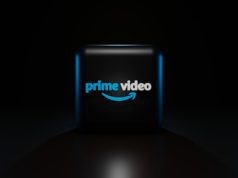 Despite limited availability and tepid consumer interest, ABI Research forecasts premium video on demand will help grow the worldwide market for VOD equipment. Premium VOD, along with advanced advertising and “catch-up” television services, will drive 20 percent growth in the worldwide market for VOD equipment, from $493 million in 2010 to $591 million in 2016.
Despite limited availability and tepid consumer interest, ABI Research forecasts premium video on demand will help grow the worldwide market for VOD equipment. Premium VOD, along with advanced advertising and “catch-up” television services, will drive 20 percent growth in the worldwide market for VOD equipment, from $493 million in 2010 to $591 million in 2016.
In its new report, Video-on-Demand, Video Server, Ad Server, Content Delivery Network Hardware, ABI Research says the total cost of premium VOD is expensive but still less than paying for cinema tickets and a babysitter. It also gives consumers the flexibility to decide between going out and staying home to see relatively recent content.
Even so, “For the time, this offering is expected to add some marginal revenue for content owners and operators without significantly altering the content revenue equations,” the report states.
DirecTV is the only major multichannel video operator so far to nationally offer movies in the controversial home premium window, which generally begins 60 days after the theatrical release. DirecTV has branded this service as Home Premiere, and charges $29.99 for 1080p HD feature films. It no longer showcases Home Premiere on its website.
In July, Moody’s reassured theater owners and operators by reporting the threat from premium VOD is “overstated” since the service was not catching on with consumers.
Sam Rosen, ABI Research senior analyst, digital home, said adding extra security measures was important for maintaining the close relationships premium VOD requires to be successful. For its Home Premiere service, DirecTV worked with video software company SeaChange International and content identification and management specialist Civolution to implement NexGuard forensic watermarking into all early window content.
Advanced advertising technologies will provide an improved revenue stream, according to the study. Comcast recently announced they are using dynamic pre-roll and post-roll ads for VOD content in selected markets, with a full rollout expected by 2012. “To date, most operators have been providing their free video on demand (VOD) libraries only as a way to reduce subscriber churn, with the focus on attracting viewers,” said Rosen. “Now, VOD system manufacturers are turning their attention to advanced advertising as a way for operators to sell ads in VOD streams.”
Related Link:
http://www.abiresearch.com/research/1005950
Photo by flickr user mexikids, used under Creative Commons license







